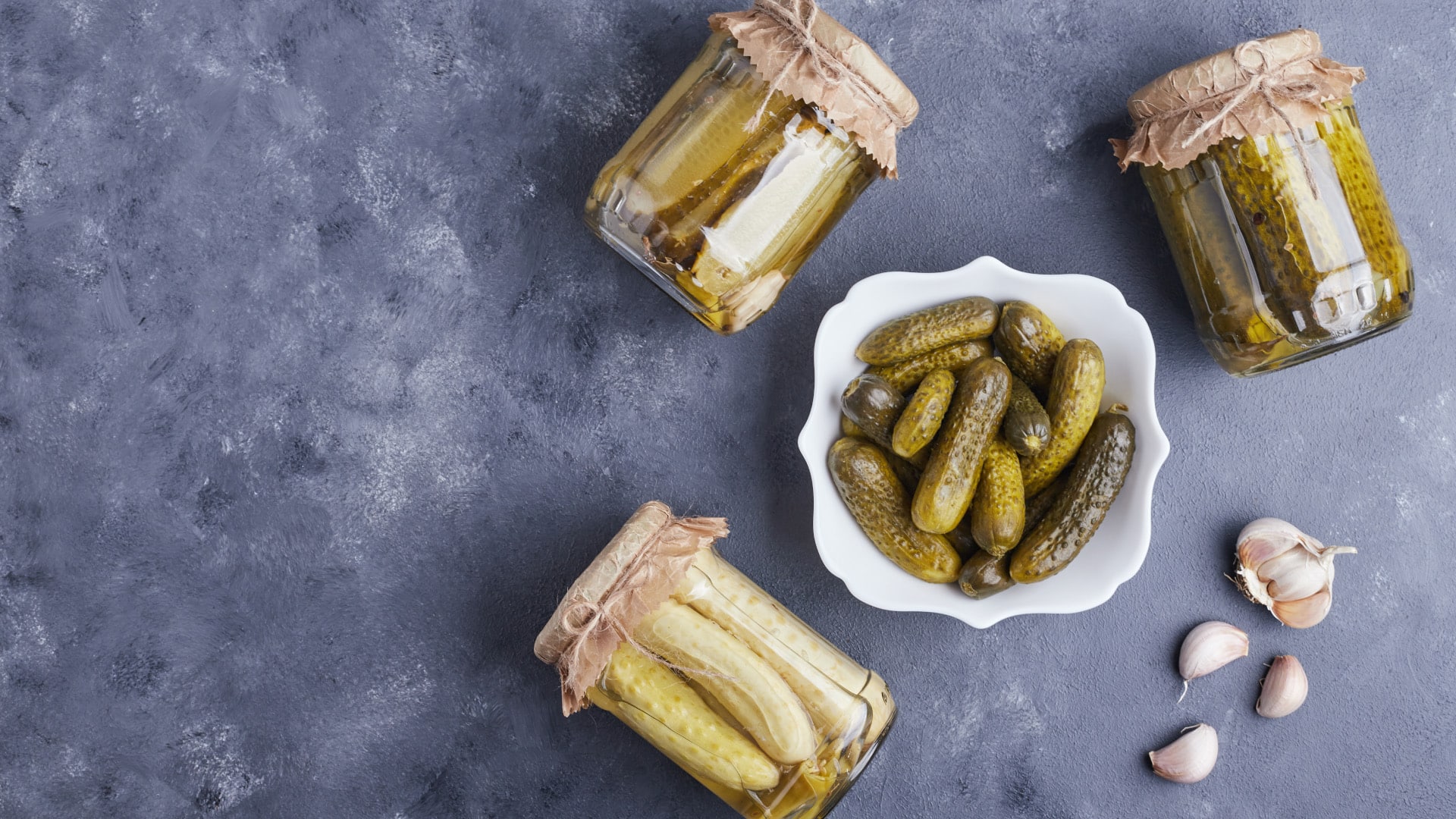Pickling has been used for centuries in many different cultures around the world as a traditional preservation method that allows vegetables and sometimes fruits to be preserved for a long time by fermenting them with vinegar, salt, and spices. In this article, we will talk about pickle types in world cultures. There are different types of pickles, especially in Turkey, Korea, India, Japan, and Central European countries.
Pickles in Turkey: Turşu
Pickles in Turkey are part of a rich and diverse culture. Turkish pickles are usually made with a mixture of vinegar and salt water and are flavored with ingredients such as red pepper flakes, garlic, and lemon. Among the pickles made in Turkey, there are countless varieties, such as sauerkraut, pickled cucumber, pickled pepper, pickled plum, and pickled carrot. Turkish pickles are usually served as cold appetizers and consumed, especially during the winter months.
Pickles in Korea: Kimchi
Kimchi, perhaps the most famous fermented food in Korean cuisine, is a pickle made by fermenting various vegetables with spices. Kimchi, which is usually made using Chinese cabbage, carrots, green onions, garlic, and chili peppers, can also be enriched with seafood such as seaweed, caviar, and oysters. In Korea, kimchi is a staple food served at every meal, and Korean families make large batches of kimchi to meet their annual needs.
Pickles in India: Achar
In India, pickles are known as “achar,” and there are many varieties. Achars are pickles usually made by fermenting fruits and vegetables with spices. Among the achar varieties made in India, there are varieties such as mango achar, lemon achar, hot pepper achar, and mixed vegetable achar. Achars are often served with yogurt and rice and are made in many homes in India.
Pickles in Japan: Tsukemono
In Japan, pickles are called “tsukemono,” and there are hundreds of different varieties. Tsukemono are pickles usually made by fermenting vegetables with salt, soy sauce, rice vinegar, miso, and sometimes sake. Among the tsukemono varieties made in Japan, there are varieties such as radish tsukemono (daikon), cucumber tsukemono (kyuri), and cabbage tsukemono (hakusai). Tsukemono has an important place in Japanese cuisine and is a staple food served at every meal.
Pickles in Central Europe: Sauerkraut
“Sauerkraut” is very popular in Central European countries, especially Germany and Poland. Sauerkraut is a pickle made by rubbing white cabbage with salt and then fermenting it. This type of pickle is frequently consumed during the winter months because it is rich in vitamin C. Sauerkraut is served with sausages and other meat dishes and is also the main ingredient in pickled salads made in various European countries.
Pickles in Russia: Solenya
In Russia, pickles are called “solenya” and are generally made by fermenting vegetables with salt water and spices. Among Russian pickles, there are varieties such as pickled cucumber, pickled cabbage, pickled mushroom, and pickled tomato. Solenya has an important place in Russian cuisine and is a basic food consumed, especially during the winter months.
Pickles in Iran: Torshi
In Iranian cuisine, pickles are called “torshi,” and there are many varieties. Torshi are pickles usually made by fermenting vegetables with vinegar, salt, and spices. Among the torshi varieties made in Iran, there are varieties such as pickled carrots, pickled beets, pickled cauliflower, and pickled cabbage. Torshi has an important place in Iranian cuisine and is served with dishes such as rice and kebab.
As a result, pickles in different cultures have many varieties made using different methods, spices, and ingredients. They are popular around the world because they are both a practical method of preserving fresh vegetables and fruits and are preferred as a delicious food with high nutritional value.
Pickles made in different cultures are shaped according to the geographical location, climate, and local products of that country, and this diversity reveals the richness of pickle cultures. Pickles are an important part of daily life and traditional cuisine in every culture, from Turkey to Korea, from India to Japan, to Central European countries and Iran.
In this article, we tried to reveal the richness and cultural importance of pickle varieties in different countries by examining pickle types in world cultures. Pickles have an important place in world cuisines, both as a nutritious and healthy food and as a delicious and colorful addition. Therefore, they will always remain a valuable and interesting subject in world cultures.


